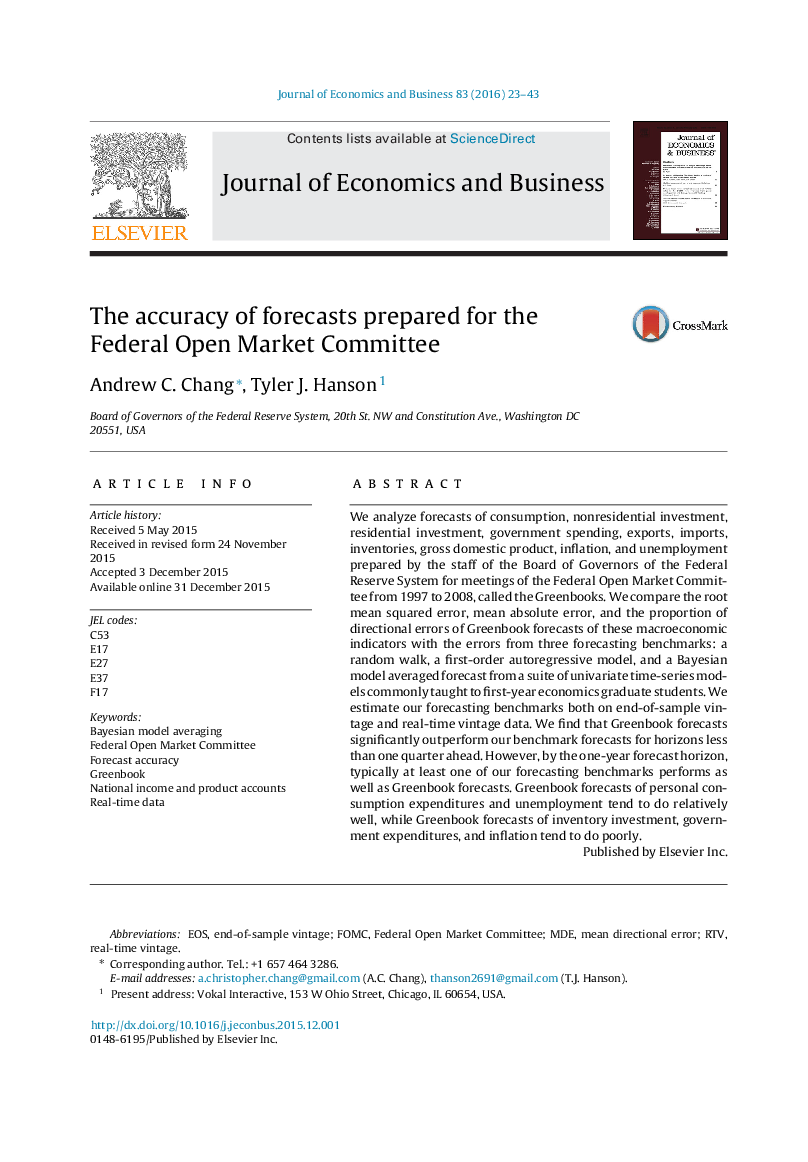| Article ID | Journal | Published Year | Pages | File Type |
|---|---|---|---|---|
| 957892 | Journal of Economics and Business | 2016 | 21 Pages |
•We examine the Greenbook forecasts prepared for the Federal Open Market Committee.•We investigate forecasts of detailed components of GDP, unemployment, and inflation.•We benchmark Greenbook forecasts against standard univariate time-series models.•Greenbook forecasts have similar accuracy to our models by the 1-year horizon.•Some Greenbook forecasts have similar accuracy to our models at shorter horizons.
We analyze forecasts of consumption, nonresidential investment, residential investment, government spending, exports, imports, inventories, gross domestic product, inflation, and unemployment prepared by the staff of the Board of Governors of the Federal Reserve System for meetings of the Federal Open Market Committee from 1997 to 2008, called the Greenbooks. We compare the root mean squared error, mean absolute error, and the proportion of directional errors of Greenbook forecasts of these macroeconomic indicators with the errors from three forecasting benchmarks: a random walk, a first-order autoregressive model, and a Bayesian model averaged forecast from a suite of univariate time-series models commonly taught to first-year economics graduate students. We estimate our forecasting benchmarks both on end-of-sample vintage and real-time vintage data. We find that Greenbook forecasts significantly outperform our benchmark forecasts for horizons less than one quarter ahead. However, by the one-year forecast horizon, typically at least one of our forecasting benchmarks performs as well as Greenbook forecasts. Greenbook forecasts of personal consumption expenditures and unemployment tend to do relatively well, while Greenbook forecasts of inventory investment, government expenditures, and inflation tend to do poorly.
